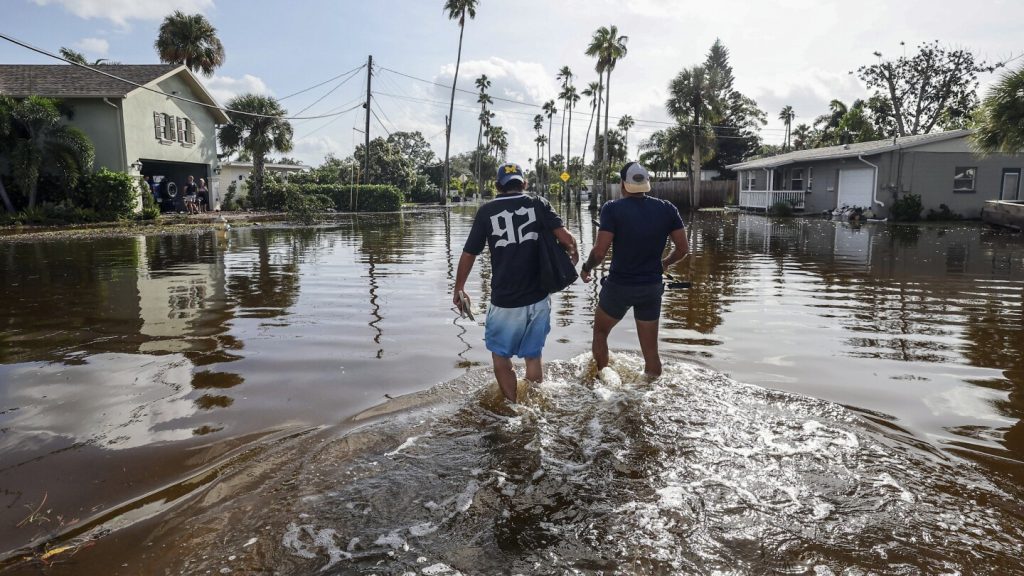Hurricane Helene wreaked havoc across Florida, Georgia, and the southeastern U.S., leaving a trail of destruction in its wake. The storm caused at least 40 fatalities and left millions without power. As the eighth named storm of the Atlantic hurricane season, Helene brought winds of 140 mph and made landfall in a rural region where fishing villages and vacation hideaways were located. Floodwaters inundated cars and buildings, while the winds ripped off roofs of businesses, houses, and churches. Rescue crews used fan boats to evacuate stranded individuals, and Coast Guard crews rescued people in distress, including a man and his dog whose sailboat became disabled off the coast of Florida.
The aftermath of Hurricane Helene was devastating, with authorities in various states scrambling to assess and address the widespread damage. In Florida, Georgia, Tennessee, and other areas, hospitals were left without electricity, and significant damage was reported to the power grid. In Atlanta, streets were submerged in water, while in southern Georgia, severe damage was observed. Dozens of people were rescued from a hospital roof in Tennessee, and the evacuation of downtown Newport was ordered due to a dam’s catastrophic failure.
Residents, such as Faith Cotto and her mother Nancy, experienced heartbreak as they surveyed the remains of their home in St. Petersburg, Florida. Amidst the floodwaters, their brick home burned down, adding to the devastation caused by the storm. In Crystal River, north of Tampa, firefighters carried children across floodwaters, and residents waded through ruddy waters searching for their loved ones. Throughout the impacted areas, scenes of destruction and displacement were prevalent, as boats were displaced, homes were destroyed, and debris littered the streets.
The relentless force of Hurricane Helene brought a wave of destruction that affected communities far beyond the storm’s immediate path. In regions like Atlanta, where streets were flooded with reddish-brown water, and in Valdosta, Georgia, where a 100-year-old home was damaged by a fallen oak tree, the impact of the storm was evident. Businesses, homes, and infrastructure suffered significant damage, prompting widespread rescue and relief efforts. The resilience and unity of communities were put to the test as individuals came together to support one another in the face of adversity.
As the cleanup and recovery efforts began in the aftermath of Hurricane Helene, the true extent of the damage caused by the storm became more apparent. Residents and business owners faced the daunting task of rebuilding and repairing their properties, while authorities worked to restore essential services and infrastructure. The aftermath of the storm served as a sobering reminder of the power of nature and the importance of preparedness in the face of natural disasters. The road to recovery would be long and challenging, but with resilience and community support, affected areas would eventually rebuild and restore what was lost.
In the wake of Hurricane Helene, stories of heroism and resilience emerged as communities came together to support one another in the face of adversity. From the valiant efforts of rescue crews and emergency responders to the kindness and generosity of neighbors helping each other rebuild, the spirit of unity and solidarity shone bright amidst the devastation. Despite the challenges and hardships faced by those affected by the storm, a sense of hope and determination prevailed as individuals and communities worked together to overcome the obstacles in their path. The resilience and strength displayed in the aftermath of Hurricane Helene were a testament to the human spirit’s ability to endure and recover from even the most challenging circumstances.


